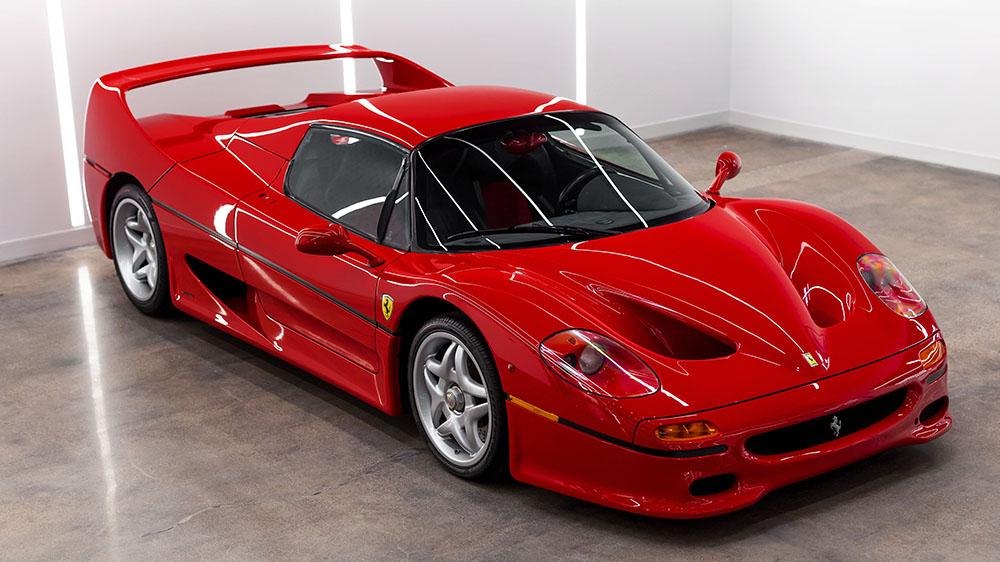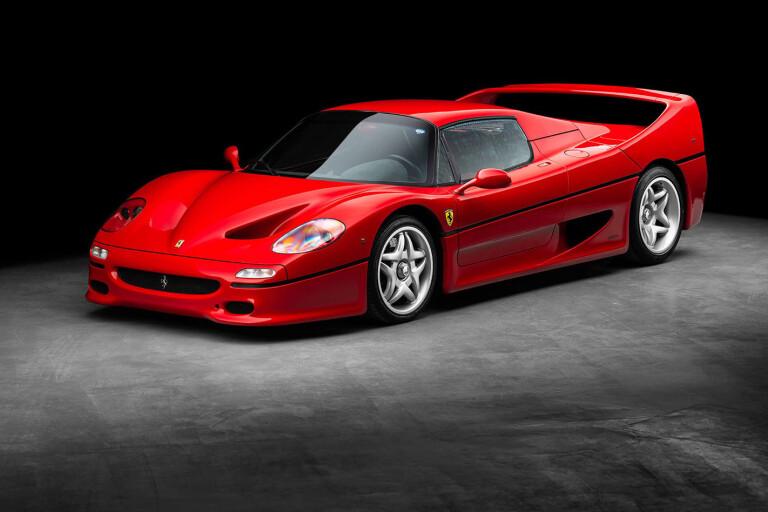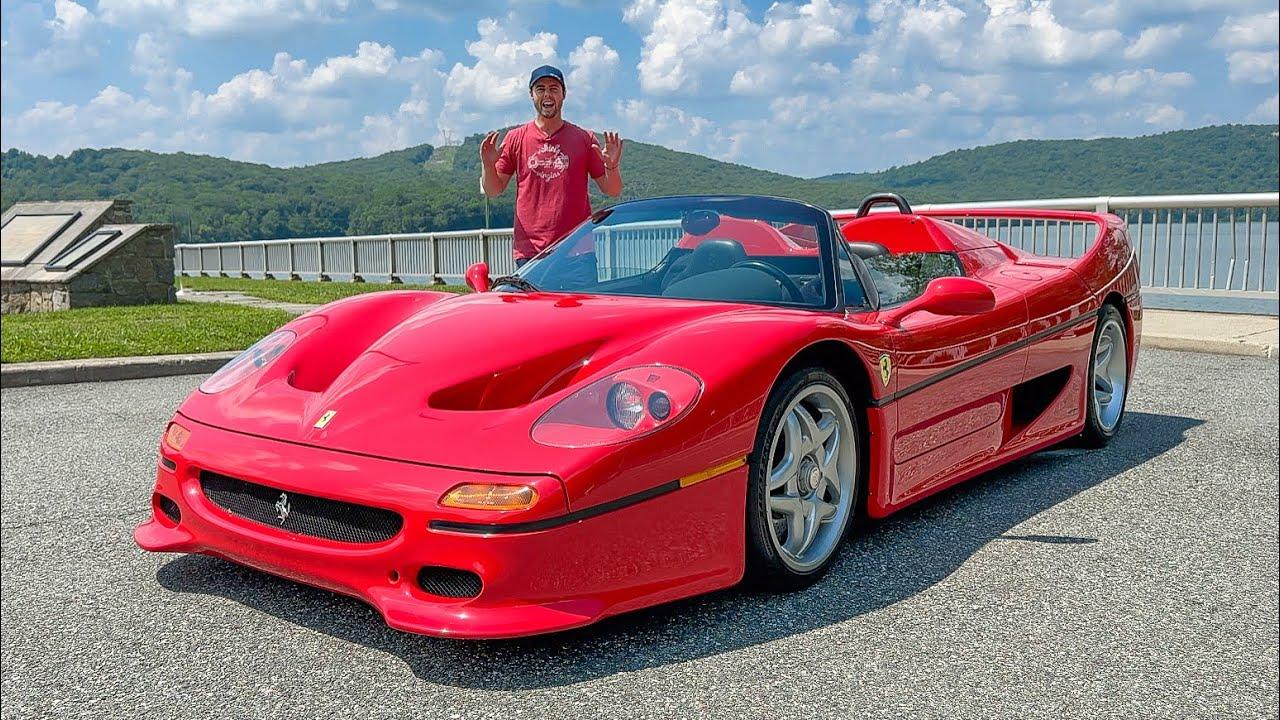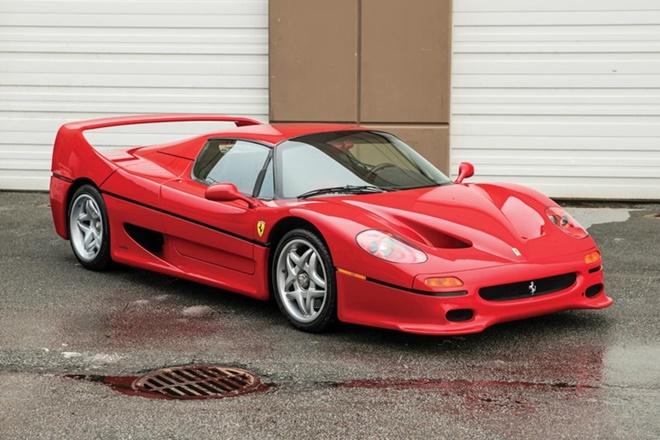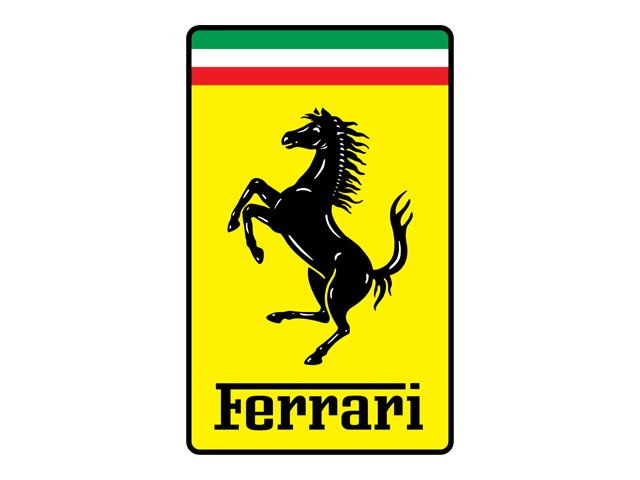None Ferrari F50
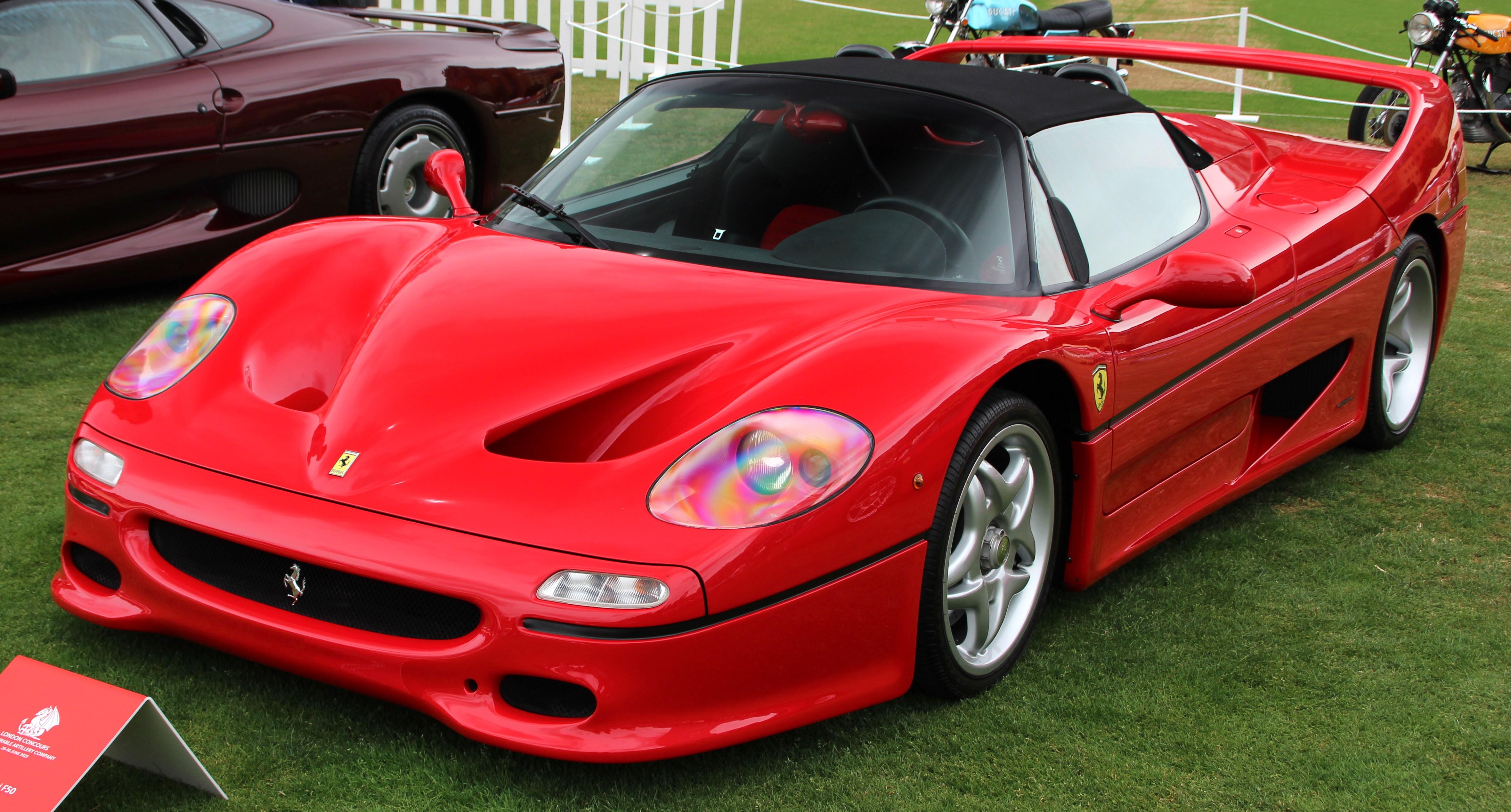
The descriptions of the Classic Cars in the Directory were partly generated or supplemented with the help of artificial intelligence (AI). The content may occasionally not always be entirely accurate or factually correct despite careful checking.
The Ferrari F50 is a supercar that was produced by Ferrari from 1995 to 1997. It was developed to commemorate Ferrari's 50th anniversary and is the successor to the legendary Ferrari F40. It features advanced technologies developed by Ferrari's racing division, making it one of the most advanced and innovative supercars of its time.
The Ferrari F50 is powered by a naturally aspirated 4.7-liter V12 engine that delivers 520 horsepower and 347 lb-ft of torque. The engine is mated to a six-speed manual transmission that sends power to the rear wheels. The F50 is capable of accelerating from 0 to 60 mph in just 3.7 seconds and can reach a top speed of 202 mph.
The F50 features a carbon fiber and aluminum honeycomb monocoque chassis that provides exceptional rigidity and weight savings. The body of the car is made entirely of carbon fiber, which further reduces weight and improves performance. The F50's design is inspired by Formula One cars, with a prominent front spoiler, low-slung body, and rear wing that provides downforce.
The F50's suspension is derived from Ferrari's racing cars and features double wishbones at the front and rear. The suspension is fully adjustable, allowing drivers to dial in the perfect setup for any driving condition. The F50 also features huge, ventilated disc brakes with six-piston calipers, which provide incredible stopping power.
Inside the cockpit, the F50 features a minimalist design with a focus on the driver. The car has no power windows, no air conditioning, and no radio. Instead, it features a simple aluminum dashboard with a set of analog gauges, a racing-inspired steering wheel, and a six-point racing harness to keep the driver firmly planted in their seat.
The Ferrari F50 is one of the most technically advanced and innovative supercars ever produced. Its high-revving V12 engine, lightweight construction, and advanced suspension make it a true driver's car. With only 349 units ever produced, the F50 is also one of the most exclusive and sought-after Ferraris of all time.
Milestones
- The Ferrari F50 was first introduced in 1995 as a successor to the Ferrari F40. - Only 349 F50s were produced, making it a highly sought-after collector's item. - The F50 utilized a mid-engine layout, with a 4.7-liter naturally aspirated V12 engine producing 512 horsepower. - The F50 was one of the first supercars to feature a Formula One-style engine, allowing it to reach a top speed of 202 miles per hour. - The F50 had a unique removable roof panel, allowing drivers to convert it from a closed-top coupe to an open-air roadster. - The F50 featured high-end components, including carbon-fiber bodywork and a carbon-fiber chassis. - The F50 was highly praised for its impressive handling and driving dynamics, making it a popular choice among track enthusiasts. - The F50 was produced for only two years, with the last one rolling off the production line in 1997. - Today, the Ferrari F50 remains one of the most iconic supercars of all time, with a small number of them still in existence and highly coveted by collectors.Technical
- Engine: 4.7-liter naturally aspirated Ferrari V12 - Power output: 520 hp at 8000 rpm - Torque: 347 lb-ft at 6,500 rpm - Transmission: 6-speed manual - 0-60 mph time: 3.6 seconds - Top speed: 202 mph - Fuel economy: 8 mpg city, 14 mpg highway - Curb weight: 3075 lbs. - Length: 4,480 mm (176 in) - Width: 1,996 mm (78.6 in) - Height: 1120 mm (44 in) - Wheelbase: 2,580 mm (102 in) - Suspension: Front and Rear: Independent upper and lower wishbones, coil springs, twin telescopic hydraulic dampers, and anti-roll bar - Brakes: Brembo 4-wheel ventilated disc brakes with ABS - Tires: Front: Pirelli P Zero 245/35 ZR 18, Rear: Pirelli P Zero 335/30 ZR 18 - Construction: Carbon fiber body over a tubular steel frame - Production years: 1995-1997 - Total production: 349 units.